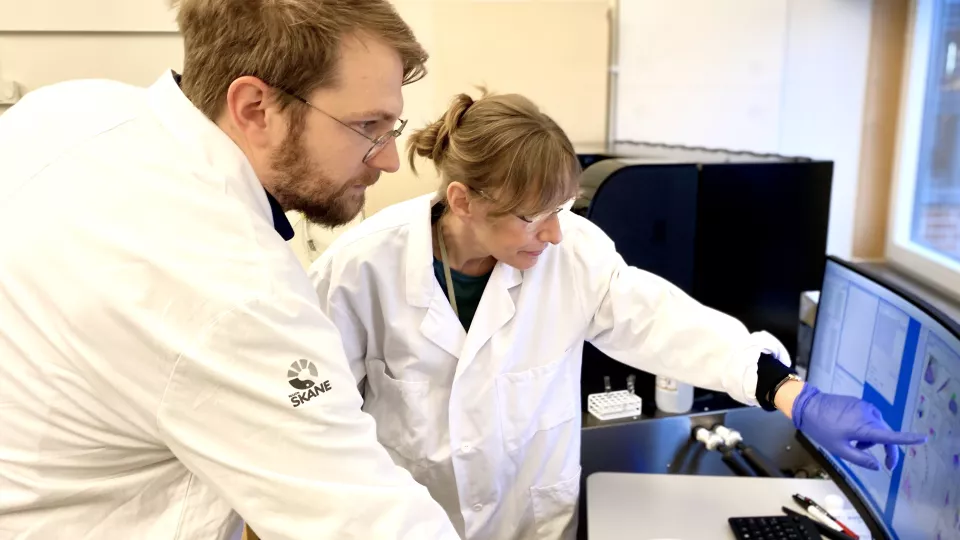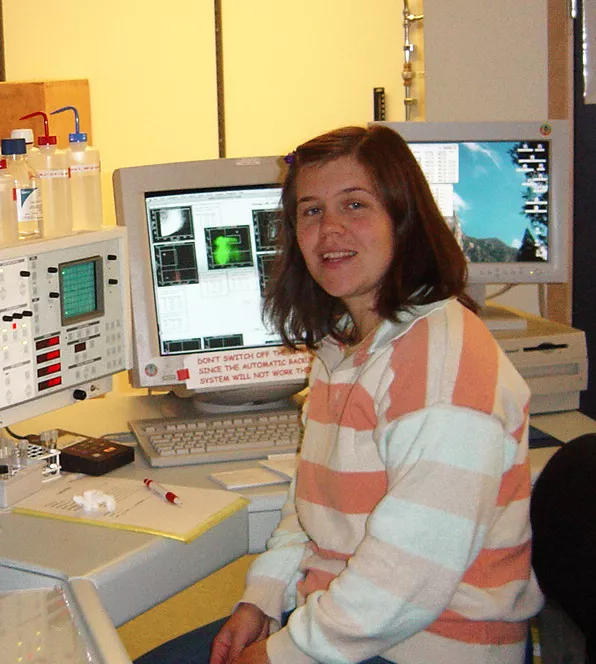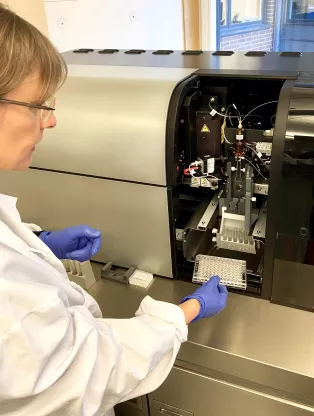“I really love my job! It’s stimulating to meet so many people and hear about their different research projects. To solve problems as they arise one also has to have a bit of “car mechanic” nature in them and not be afraid to fiddle with the machines. And that’s something that I am well suited for,” reports Anna Fossum.
Melody and Aria have just received a new FACS friend – Symphony, the newest addition to the “FACS Family.” Charlotta Böiers, Research team manager responsible for the research structure, herself has a deep interest in music and initially thought that the instrument’s music-inspired name had a deeper meaning. And now she’s a bit disappointed, having learned that this is probably not the case:
“So for now, some users are rightly calling our newest investment “the barbecue grill,” but we’ll see what nickname it gets later. Maybe it’s a real ‘Diva,’” she laughs.
And it does look like a big barbecue grill. The difference is that the machine costs quite a few more millions of kronor. It can also extract a larger number of cell populations than any of the previous FACS variants, with higher resolution and with more colours, up to 30. This makes it possible to distinguish between diseased and healthy cells, and to find very small populations.
The earliest FACS device was introduced in the early 1970s and was much bulkier than today’s instruments. Anna Fossum started working in the 1990s, when two devices took up the entire room. Today, four instruments easily fit in the same room.
“At that time, we were two full-time employees who managed the instruments, which was a huge job. Just warming those up took over an hour. They had two lasers, unlike our new addition which has five. There’s also a big difference in speed – back then we could sort 1,000 particles per second, whereas today the same figure is 25,000. A lot has really changed over the years,” notes Anna Fossum.
But the ability to analyse more parameters places greater demands on researchers to plan their experiments carefully, and it is also more complex to analyse the data collected. The courses offered by the Research School in Stem Cell Biology to staff and doctoral students are largely concerned with planning experiments and analysing the information generated.
The first commercial FACS instruments appeared in the 1970s and since then their use has exploded. Because measurements must be made with cells in a liquid suspension, blood research has had a head start and come furthest in studying markers present on the cell surface. In addition to the diagnosis of various blood diseases and leukaemias, the technique is not only used in immunological research but also in neuroscience such as Parkinson’s, Multiple Sclerosis and Alzheimer’s disease.
"We are extremely excited about our new Symphony investment, which with its capabilities will be at the forefront of flow cytometry for many years to come and we obviously hope that the entire University can benefit from the instrument. Please get in touch if you are interested in a briefing and booking an analysis or sorting session. We also offer assistance in planning research studies and hold regular training sessions,” concludes Charlotta Böiers.


